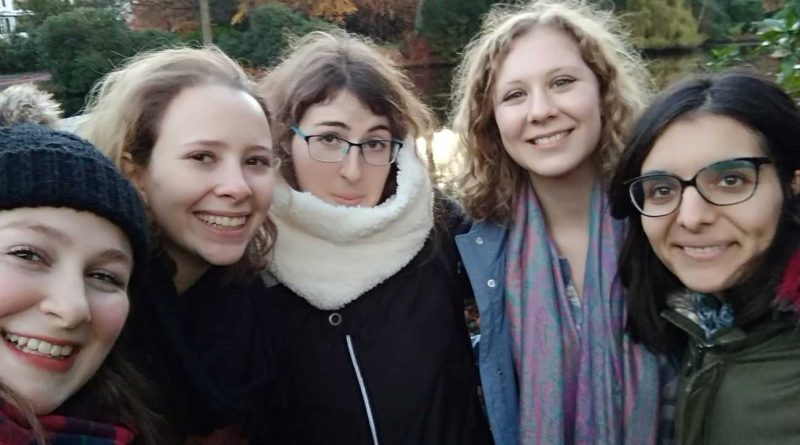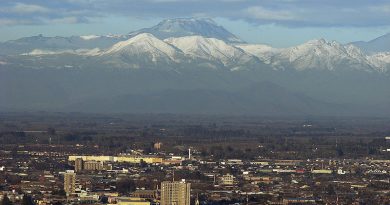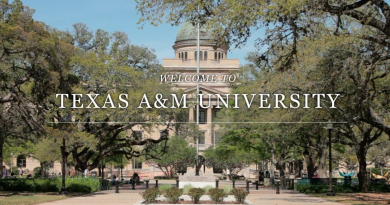Diversity and Difference in Germany (LingoMap)
Moin! Begroeting! Hola! Merhaba! Slav! مرحبا! Hello!
If I were to write this blog in all of the languages I’ve heard since coming to Germany, I think I’d have to devote my whole life to learning languages, so I’ve decided just to greet you in them. Before coming to Niedersachen, I’d expected to hear (alongside Hochdeutsch and Platt, obviously) a bit of Dutch and English, and was hugely surprised by how many other languages have become a part of das Alltagsleben in Deutschland.
Germany is an incredibly diverse country with a very colourful history of migration… Around 20% of the population have some sort of immigrant background. This diversity has greatly influenced the country and shaped it to make it what it is today. One of the most popular German dishes, for example, was created by a man from Turkey who moved to Berlin. Gewürzte Fleischscheiben, Salat und Soße (gerne auch scharf, wenn man in der entsprechenden Stimmung ist!), gut gemischt und in einem Brötchen serviert – der Döner Kebab ist eines der Lieblingsgerichte Deutschlands. However, the influences of migration in Germany are not only culinary, and the type of migration seen in Germany has also changed. The population are used to the number of Gastarbeiter living and working in Germany, but the country has also opened its borders to einer großen Anzahl von Flüchtlingen (über 1,5 Millionen zwischen 2015 und 2016), who are hoping for a new start in a different country.

Working in a Grundschule, I didn’t expect to see much evidence of migration, especially in a little village auf dem Land, aber in Deutschland werden die Flüchtlinge im ganzen Land verteilt. This means that the refugees aren’t all living in the larger cities, but also in smaller cities and villages throughout Germany, and a few even live on the islands to the North of Germany. Deswegen habe ich auch Erfahrungen mit Flüchtlingen gesammelt und einige sachen bemerkt:
- Die Flüchtlinge (und besonders die Kinder) sind unglaublich bemüht. Einige sind von ihrer Reise nach Deutschland sehr traumatisiert. Sie verstehen wenig-bis-kein Deutsch und brauchen viel Unterstützung, die sie von der Gemeinde und Gesellschaft bekommen (zB Deutschunterricht zu Hause), aber sie geben wirklich alles um Freundschaften zu schließen und sich zu integrieren.
- Freundschaft überwindet (auch sichtbare) Unterschiede. Die deutschen Kinder merken nicht, dass die Flüchtlingskinder manchmal ‘anders’ aussehen als sie selbst. Sie wissen nur, dass es nicht schön ist, sich einsam zu fühlen, und wollen das verhindern.
- Wo ein Wille ist, ist auch ein Weg. Es kann schwierig sein, sich in eine neue Gesellschaft zu integrieren oder neue Leute in seinem Land zu akzeptieren, aber wenn man es machen will, kann man das. Soll die Intergration gelingen, ist jeder gefordert – alle müssen zusammen arbeiten, um dieses Ziel zu erreichen. Die Flüchtlinge können es nicht schaffen, ohne die Unterstützung der Deutschen, aber Unterstützung bringt nichts, wenn man sich nicht integrieren will.
Of course such high numbers of migrants can lead to a number of challenges, such as a strain on health services, the struggle to balance the national budget, and even the question of what to teach in RE lessons in schools, but all in all I get the feeling that the German population are extremely welcoming and willing to help. Solange, alle einen Strandkorb haben, macht es nichts, wer da drin sitzt!

Mit diesem Happy End, wünsche ich euch noch einen schönen Tag noch und ich freue mich schon auf das nächstes Mal!
Bis bald!



